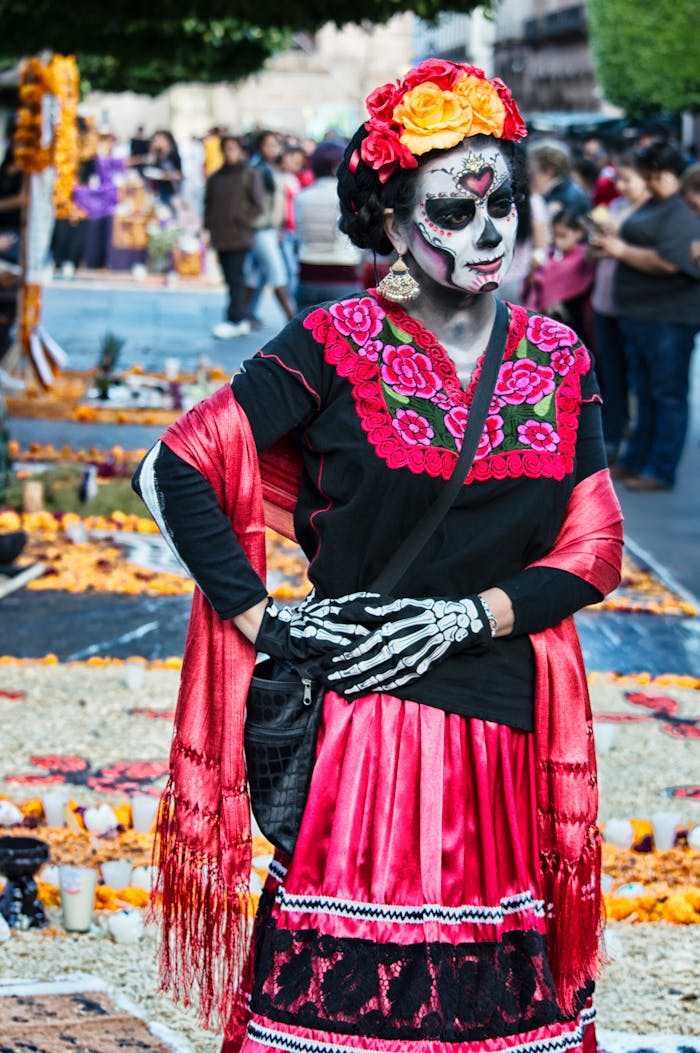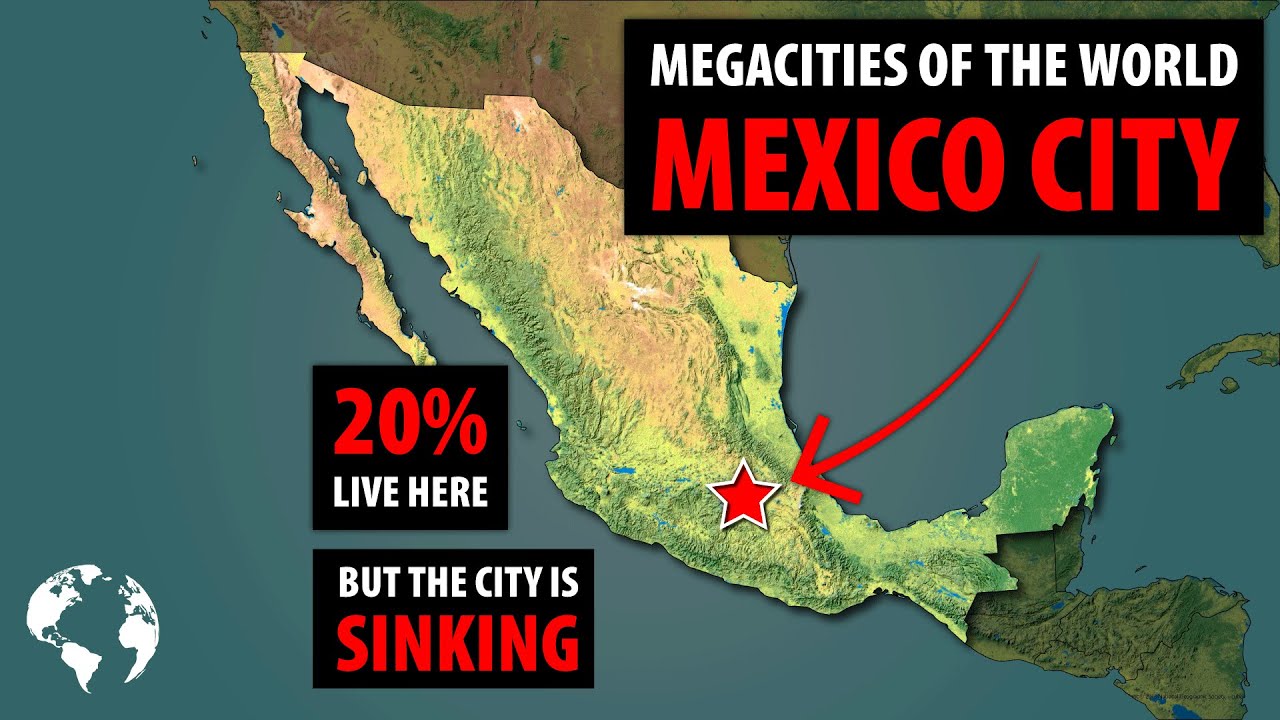Exploring Mexico City: The Heart of Mexico
Mexico City, the vibrant capital of Mexico, is a tapestry of rich history, bustling streets, and an unmatched culinary scene. As the heart of Mexico, it offers a unique blend of contemporary urban life and deep-rooted traditions. From the ancient ruins of Templo Mayor to the modern marvels of Paseo de la Reforma, the city embodies the spirit of Mexican culture. Travelers keen on immersing themselves in true Mexican heritage will find Mexico City an inexhaustible source of discovery.
The city’s neighborhoods, or “colonias,” each boast their own identity and treasures. La Condesa and Roma are famous for their European-influenced architecture, chic cafes, and art galleries, making them a delight for anyone looking to get lost in the charm of city streets. Meanwhile, the historic center, Centro Histórico, is a UNESCO World Heritage site that serves as a living museum, with landmarks like the majestic Zócalo plaza and the towering Catedral Metropolitana. These areas offer a perfect starting point for any visitor aiming to grasp the eclectic essence of Mexico’s capital.
No visit to Mexico City would be complete without delving into its world-renowned culinary offerings. Street food stands and markets serve up delicious tacos, tamales, and quesadillas that embody the rich flavors of Mexican cuisine. For a more upscale dining experience, the city is home to several restaurants helmed by internationally recognized chefs, showcasing innovative dishes that still pay homage to traditional Mexican flavors. Eating your way through Mexico City is not just a feast for the palate but a deep dive into the culture’s soul.
The city is also a haven for art and history enthusiasts. The Frida Kahlo Museum, located in the Coyoacán district, offers a glimpse into the life of one of Mexico’s most iconic artists. Meanwhile, the vast National Museum of Anthropology displays artifacts from Mexico’s pre-Columbian civilizations, offering insights into the country’s ancestral heritage. Mexico City’s commitment to preserving its history while embracing modernity makes it a compelling destination for travelers from around the globe.
Discovering the Local Name for Mexico City
When exploring Mexico City, it’s captivating to uncover the layers of history embedded within its streets and landmarks. But even more intriguing is learning the local name for this sprawling metropolis: **CDMX**. This abbreviation stands for **Ciudad de México (City of Mexico)**, a term that encapsulates the city’s essence and its core identity in the hearts of its inhabitants. Beyond a mere acronym, CDMX reflects the vibrant, fast-paced, and dynamic nature of one of the world’s largest cities.
Delving deeper, the term CDMX not only aids in navigation and communication but also serves as a symbol of pride for the locals. It represents a blend of the city’s ancient past, colonial history, and its ever-evolving modernity. This blend is seen in the mix of architectural styles, the fusion of culinary traditions, and the diverse cultural expressions found throughout the city. For travelers, understanding and using the term CDMX opens a door to experiencing the city through the eyes of those who call it home.
Moreover, the adoption of the name CDMX has been pivotal in the city’s branding and marketing efforts, making it more accessible and inviting to international visitors. It signifies a modern, inclusive, and forward-thinking city that values its history while constantly looking toward the future. Visitors who embrace this local terminology will find themselves more deeply connected to the city’s rhythm, participating in a shared language that resonates with both the historical and contemporary spirit of Mexico City.
The Significance of “CDMX”
CDMX, short for Ciudad de México or Mexico City, stands at the heart of Mexico’s vast and varied landscape, both geographically and culturally. It is not just the political capital of the country but also a melting pot of history, art, and gastronomy, making it an unparalleled destination for travelers seeking adventure and cultural immersion. The significance of CDMX in the context of travel and adventure in Mexico cannot be overstated. It represents the epicenter of ancient civilizations while simultaneously showcasing the modern vibrancy of Mexican life. The city’s architectural marvels, from the remnants of the Aztec empire to contemporary design, tell stories of a past interwoven with the present.
In exploring CDMX, travelers embark on a journey through time. The city’s museums, like the world-renowned Museo Nacional de Antropología, offer a glimpse into the lives of the Aztecs and other indigenous peoples who once ruled this land. Meanwhile, the art scene in neighborhoods like Roma and Condesa reflects the city’s ongoing cultural evolution. These areas, brimming with galleries and street art, highlight the creativity that pulses through the city’s veins, further cementing CDMX’s significance as a cultural hub in Mexico and beyond.
The culinary adventures awaiting in CDMX are yet another facet of its allure. Here, traditional Mexican flavors meet innovative culinary techniques, producing an explosion of tastes that can only be experienced in the streets and markets of this bustling metropolis. From savoring tacos al pastor in a local taqueria to indulging in gourmet dishes at world-class restaurants, food is a journey in itself within Mexico City. The significance of CDMX, therefore, lies not just in its historical and cultural riches but also in its ability to offer a wholesome and dynamic adventure that engages all senses.
Adventure Awaits in CDMX
In the heart of Mexico, lies a city brimming with adventure and waiting to be explored. Mexico City, or CDMX as it’s affectionately known, offers an unparalleled mix of history, culture, and modern excitement. No matter what kind of adventurer you are, CDMX has something special in store for you. From the ancient ruins of Teotihuacan, where you can ascend the majestic Pyramid of the Sun, to the bustling streets of La Roma, each corner of the city presents an opportunity for discovery and awe. The vast expanse of Chapultepec Park, the largest city park in Latin America, is a haven for outdoor enthusiasts and history buffs alike.
The culinary adventure in CDMX is another aspect that should not be overlooked. With an offering that ranges from street food stalls serving up tacos and tamales to high-end restaurants that reinterpret traditional Mexican dishes in innovative ways, your taste buds are in for a treat. Each neighborhood boasts its own culinary identity, making it possible to embark on a gastronomic tour that showcases the diversity and richness of Mexican cuisine. Don’t forget to try the city’s signature dishes like tacos al pastor or the exquisite mole, which are a testament to the complexity and richness of the nation’s culinary traditions.
Adventure in CDMX isn’t just confined to daylight hours. The city comes alive at night, offering a vibrant nightlife scene that caters to all preferences. Whether you’re interested in catching a live band in one of Condesa’s chic bars, experiencing a traditional mariachi performance in Plaza Garibaldi, or dancing the night away in one of the city’s cutting-edge nightclubs, CDMX’s nocturnal activities are as compelling as its daytime adventures. The energy of the city’s night scene, combined with the warmth and friendliness of its people, makes for unforgettable experiences under the Mexican sky.
Embracing the Local Vernacular
Embracing the local vernacular when traveling through Mexico can transform an ordinary journey into an extraordinary adventure. This practice isn’t just about learning a few words in Spanish; it’s about diving deep into the local dialects, slangs, and expressions that give color to the regions you visit. By making an effort to understand and use the local vernacular, travelers can foster genuine connections with the community, enhancing their experience and gaining insights that go beyond the surface level of tourist sites.
One of the first steps in embracing the local vernacular is to familiarize yourself with common phrases and colloquialisms unique to the areas you’re visiting. Mexico’s rich tapestry of cultures means that the language varies significantly from one region to another. For instance, the Yucatan Peninsula has a linguistic landscape heavily influenced by Mayan languages, while in the streets of Mexico City, you’ll encounter a dynamic mix of contemporary slang and traditional expressions. Listening to local music, watching regional films, and engaging with community members can accelerate your understanding and appreciation of these local differences.
Another key aspect is to approach the language with humility and openness. Mistakes are inevitable, but they can become opportunities for learning and laughter, breaking down barriers between you and the locals. Many Mexicans are incredibly patient and warm when it comes to language learners, often happy to correct mistakes and teach you their local idioms. This exchange doesn’t just facilitate language learning; it fosters a deeper cultural exchange, allowing travelers to immerse themselves truly in the everyday life and customs of the places they visit.
Beyond language, embracing the local vernacular also involves participating in local traditions, eating regional cuisines, and understanding the historical narratives that shape the language and expressions of the area. Whether joining in a traditional fiesta, savoring a local delicacy for the first time, or recounting stories with newfound friends in their dialect, these experiences enrich your journey, creating lasting memories and stories that resonate far beyond your visit. By diving into the local vernacular, travelers don’t just see Mexico; they feel its pulse.
Your Journey to CDMX Begins
Embarking on a journey to Mexico City, or CDMX, as it’s affectionately known, invites you into a world where ancient history and contemporary culture collide. As the pulsating heart of Mexico, CDMX boasts an endless array of experiences, from the awe-inspiring ruins of Tenochtitlan to the bustling streets of modern-day Polanco. Each corner of this vibrant city tells a story, offering a unique insight into the Mexican spirit.
The culinary adventures awaiting in CDMX are nothing short of legendary. Food lovers can revel in a gastronomic journey that spans from street food stalls serving up tantalizing tacos al pastor to high-end restaurants offering innovative Mexican cuisine. It’s a feast for the senses, where every meal promises to be an unforgettable part of your journey. The city’s love affair with food is evident in every bite, whether it’s trying out the spicy delicacies of local markets or sipping on traditional mezcal.
Cultural exploration in CDMX is as diverse as its landscapes. The city’s museums and galleries showcase everything from pre-Hispanic artifacts to contemporary art, highlighting Mexico’s rich heritage and its contribution to the global art scene. Notable landmarks like the Frida Kahlo Museum and the Palacio de Bellas Artes offer immersive experiences that blend history, art, and architecture in fascinating ways. Walking through the city’s historic center, a UNESCO World Heritage Site, you’ll feel the layers of history unfold around you.
Outdoor adventures also abound in and around Mexico City, offering a refreshing contrast to its urban core. The nearby volcanoes, Alejandro de Humboldt National Park, and the waterways of Xochimilco provide natural escapes for those seeking adventure beyond the cityscape. Whether it’s hiking, canal boating, or simply enjoying the sprawling views from Chapultepec Castle, CDMX offers a unique blend of urban and natural experiences that cater to every kind of traveler.


